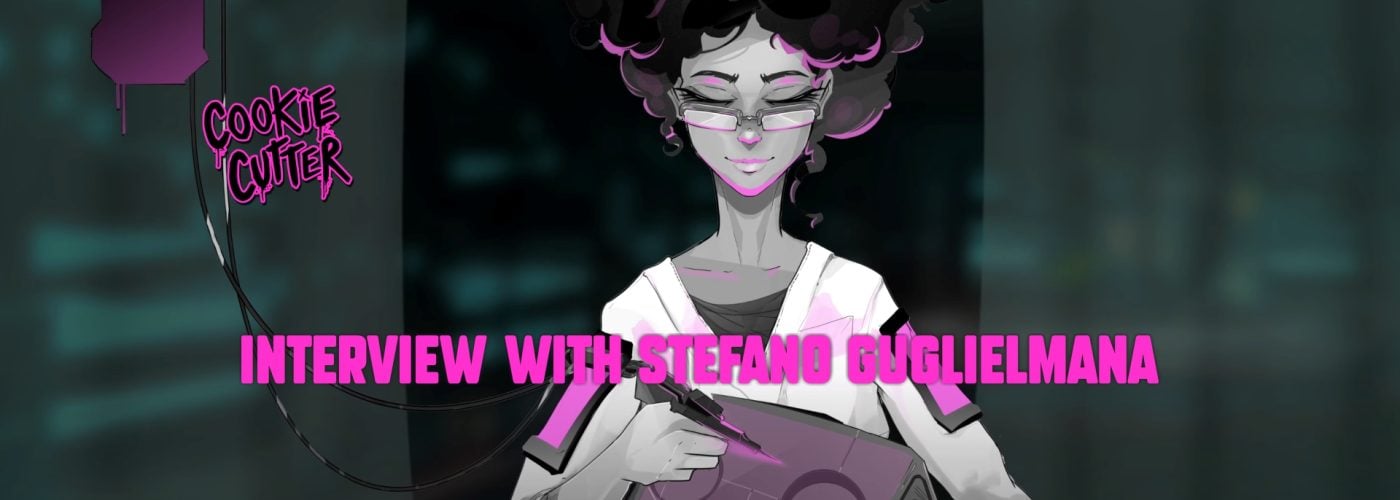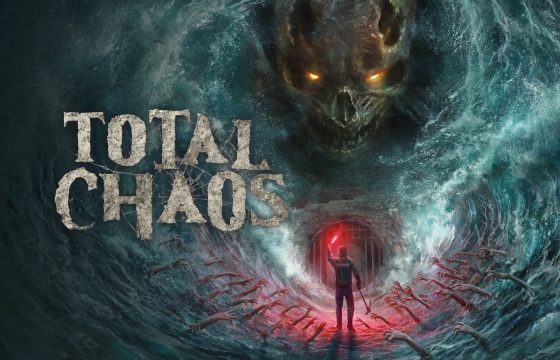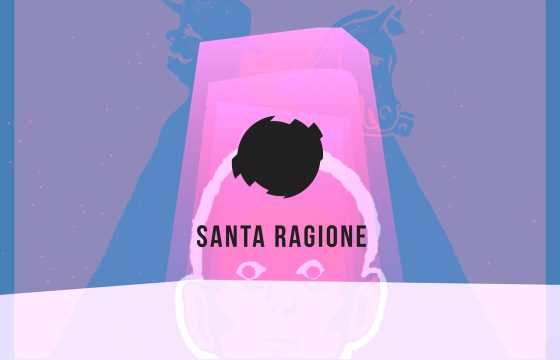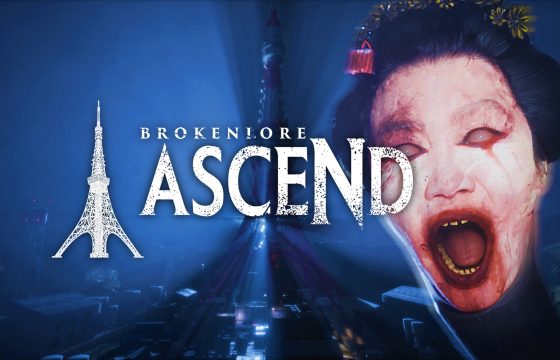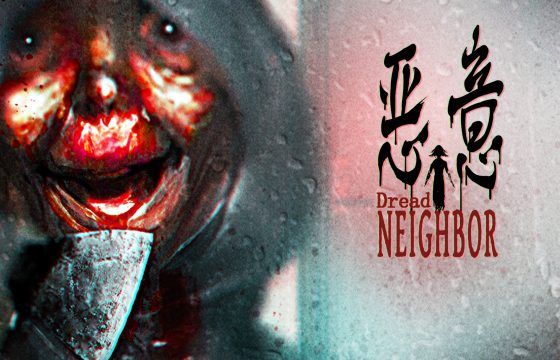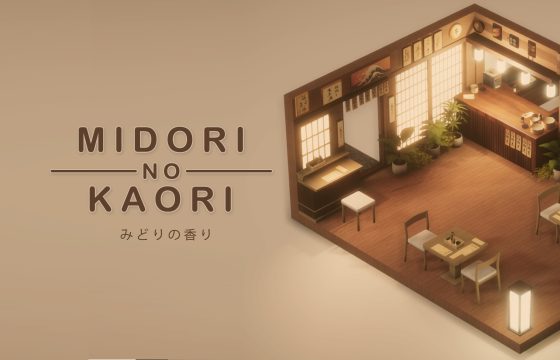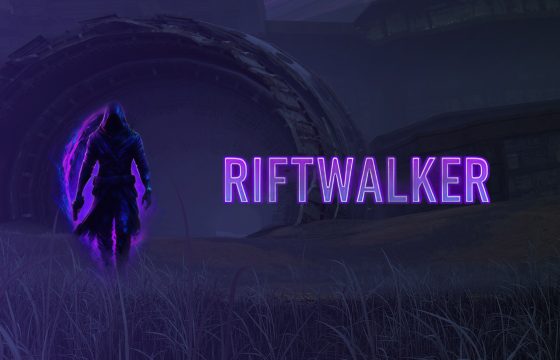Our Interview with Stefano Guglielmana, Director and Artist of Cookie Cutter at Subcult Joint LTD.

Today we return to talk about Cookie Cutter, the highly anticipated, irreverent, and hyper-violent Metroidvania, developed by Subcult Joint LTD (marking the team’s debut in the gaming industry) and published by Rogue Games, planned for release on December 14th for PC, PlayStation 5, and Xbox Series X/S. If the title is new to you, no worries, you can find all the necessary information in our main coverage dedicated to the game.
But let’s get back to us… Today, we’re excited to bring you a special feature: our interview with Stefano Guglielmana, the Director and Artist of Cookie Cutter. As one of the key contributors and minds behind the suggestive and stunning art direction found in the game, Stefano Guglielmana, in his capacity as the lead artist, plays a crucial role in shaping the game’s mesmerizing visual aesthetics.
Before we jump into the interview, let us take a moment to share a few insights about him and his background. This will help you get better acquainted with both the artist and his art.
Who is Stefano Guglielmana?
A true artist in every sense, Stefano Guglielmana is an individual of exceptional brilliance, ingenuity, and eclecticism, making art his language, medium, and vehicle of expression.
With extensive firsthand experience as a 3D Animator, Stefano possesses a wealth of expertise in crafting dynamic character and environment animations. Proficient in character rigging and specializing in the creation of comprehensive biped and quadruped rigs with additional control features, he brings a multifaceted skill set to his artistic endeavors. With over four years dedicated to animation, Stefano has refined his ability to plan and execute intricate scenes, seamlessly incorporating multiple character interactions, nuanced dialogue acting, and intense action sequences.
Over a freelance journey spanning seven years, Stefano has collaborated with advertising and game companies, cultivating a talent for clearly and swiftly articulating key ideas to project teams. Additionally, he is a highly talented comic artist (you can find many of his artworks on ArtStation at the following link), drawing inspiration from his background in comics. He adeptly sketches ideas for presentation to directors and producers. Furthermore, his traditional drawing skills come into play for illustrative works and conceptual pieces, adding a unique dimension to his artistic repertoire.
He is the owner, director, and artist at Subcult Joint LTD, the independent game studio behind Cookie Cutter. But you already knew that, right? Well, now that we’ve touched on all the essential details, we leave you, then, to the interview!
Francesco:
In 2021, in the heart of Brighton, England, your team, Subcult Joint LTD, came to life. A small, youthful and dynamic virtual collective composed of passionate individuals, artists, developers, and (obviously) gamers. Could you kindly provide some insights into how this journey began for you and the initial steps you took in the gaming industry?
Stefano Guglielmana:
I started working in the game industry in 2008 for a small indie developer in Catania, Sicily, called Dokroton Studio. There I learned all the skills that made me a really good generalist (3D modeling, rigging, texturing and animating). Back at that time we were trying to develop a Nintendo Switch game. From there I worked at an augmented reality studio in Barcelona called Pangea Reality, and we developed a PS4 and Xbox project called Zheros. Then I worked as a 3D animator at Rimlight Studio. Finally I landed at Unity in Brighton where I continue to work while we’re founding Subcult Joint.
Francesco:
As clearly outlined in your team’s presentation, you embrace an artistic and production approach that is undeniably unconventional, breaking away from the conventional mold and steering clear of trends “imposed” or recommended by the video game scene. Now, delving into the particulars, what truly defines your vision of game development? In your perspective, what distinguishes it from the mainstream of the contemporary industry?
Stefano Guglielmana:
I think what distinguishes us in the current videogame scene is that we not only aren’t afraid to listen to ourselves and follow our vision completely, but that we really like using our own sensibilities and experiences as references in what we are creating. The audience is not our focus when we are making decisions, but we are moved by the desire to mix stuff and have fun in a playful way. We try to build the game that we like and sometimes make really weird decisions and make them work, just for the sake of bringing a new flavor into our dish.
We love the idea that our role is to combine elements that we love in an unusual way, but also to give to this vision an enormous scale of love and respect, we don’t want to make sick jokes about stuff, we want to explore our capacities under our own terms.
Francesco:
For the release of Cookie Cutter, you’ve inked a deal with the American publisher Rogue Games. If you’re able to share, what are the key reasons behind choosing them with the supervision of the release? And why do you believe Rogue Games is the perfect publisher for Cookie Cutter?
Stefano Guglielmana:
I always wanted a publisher for our game. I had more than 100 meetings with a lot of different ones around the globe. At some point, Konami was super interested in the game and we had a really cool chat in which they told me that it was the first time that the three offices of Konami around the globe were discussing the same indie game they saw online.
We got more other great names to the table but even if they were super interested they were afraid of the financial risk this game might bring. For some of them it was too much of a niche product, and for some of them it was pretty divisive, while for some others having a game with a talking vagina in it and a lot of strong female symbols made by a dude was just too wrong.
When I met Rogue they not only were interested in the project, but they were IN LOVE with it. We immediately bonded with them in a really deep way. At Subcult we come from a music background, punk rock bands, metal bands etc… So, we got a really uncommon attitude compared to the common video game studios, and they were the same as us. We are both extremely professional, but we can be stupid at times, and have fun talking about really gross stuff, with them it feels like working with your best friend – a friend who has enough money to build your dream and that trusts you and your vision TOTALLY without ever wanting to make you drift away from it.
Francesco:
Why did you choose Metroidvania as your debut title, especially in terms of game design? Was this concept something that took shape right from the start, or did it unfold more gradually during the early concept phases?
Stefano Guglielmana:
Francesco Bizzini and I come from a long way in videogame game projects, we have built over the last 15 years a lot of fighting systems better and better, so this time we wanted to do our best possible work. Cookie Cutter is a fighting game, but it also have exploration, backtracking, simple puzzles, challenges and secret areas, merchants and upgrades, and component to build a bit your character, we wanted to push a lot more the Action RPG aspect out of it, but it was too difficult for our studio size.
I hate the term Metroidvania, too abused, I prefer Castledroid XD, but mainly Cookie Cutter is an action platformer, nowadays can be tagged as a Metroidvania. This was clear since the prototype demo of 2020.

Francesco:
Why Cookie Cutter? If it’s not a spoiler, what led to the choice of such a peculiar and mysterious name for your first title?
Stefano Guglielmana:
Again, coming from a music background I’m more used to writing songs. Cookie Cutter is entirely inspired by music, mainly Tekno and punk rock, so the vision was to do a Pop-Punk project. The name of this project is mainly Cookie Cutter cause it sounds cool. Cookie Cutter identifies a way to build things all in the same way, consequently, like it they are made all from the same mould.
I love to provoke, as an ex punk rocker provocation is my favourite communication form and I have seen the indie scene in this way lately, cookie-cutter products all made out of the same mould the idea of this resonates GREATLY with the production line that can happen inside an android factory. So when it came the time for Raffaele Romano to write the game, we worked together to incorporate the Cookie Cutter into our narrative and in a really serious way we worked hard to embed it in it. We almost always start with a vision and from there we work toward assembling it in a logical way into the game.
Francesco:
Cookie Cutter is infused with a strong punk identity that takes on the tones not of a single theme, but of a macro-theme, almost like a principal motif that delineates all aspects, components, and ensuing features. However, where does this identity come from? Are there events, anecdotes, or perhaps even personal and autobiographical experiences that have shaped Cookie Cutter’s punk theme?
Stefano Guglielmana:
I’m an ex-punk rocker (as Jhon Constantine) and I played a lot with my band for 10 years around Italy (once I left they moved to London, get REALLY BIG and played gigs all around the world, fuck them XD). I always wanted to incorporate myself and the punk rock Italian scene attitude into the media. So when I got the occasion to make a product myself I naturally started working in this direction.
The vision was this waitress, definitely not a hot chick but a badass rude girl, a little bit like a female Wario, and a lil bit like the one I knew from the gigs in the squat around Italy. They were dangerous, they would kick your ass if you were trying to bother them, and they were always drunk and upset and lovely.

I should say that the entire style is pretty unique, born from the seed of punk rock and infused with 1000 other stuff we grew up with. from the 90’s to MTV to manga and anime, but again, mainly MUSIC. I started the project and defined the generic style at the beginning and even if the other team members blend their style in, my stuff is still pretty strong and you can feel it.
Francesco:
Cookie Cutter, as you’ve coined it, is a Techno-Pop-Punk Post-Kawaii Metroidvania. How would we define, describe, and translate this, especially the term “Post-Kawaii,” and what does it imply, particularly in terms of style and art?
Stefano Guglielmana:
- Techno: Prodigy, pure 90s, MTV , generation underground illegal raves in dirty alleys, colourful vision and trip into the sounds.
- Pop: Scott Pilgrim, Ranma ½, colourful anime ,saturated colours, cartoony shapes, Gorillaz and Pokemon.
- Punk: Attitude, fighting the authority, destroying the evil corporation, DIY aesthetic.
- Post-Kawaii: A strong art base of Japanese style and culture we decided to destroy, to evolve.
Take Japanese animation school, make the character less appealing, destroy the proportion and the language, make it dirt, fuse it with punkzine and decorate the shapes in a way that you like, make it more wacky, make it more personal. Now look at it. Is it still Japanese? Is it still kawaii? Is this a waifu? I don’t think so, it’s new, so we’re happy.
Francesco:
A dystopian world disguised as utopia, a tyrannical and totalitarian government masked as a benefactor, enforcing its harsh “Corpus iuris civilis”, grounded in control, consumerism, standardization, and homogenization. However, what exactly is the true role of INFONET? Could you share additional insights into the game’s storyline? And are there specific historical-literary references or real events from which you might have drawn inspiration, or was it entirely a product of your own imagination and inventiveness?
Stefano Guglielmana:
The evil corporation is the pretty stand cannon evil on every cyberpunk media out there. Nothing new in here, so having a Dieselpunk game with a punk rock -fight the authority- attitude was a really fit choice to take for us. Raffaele Romano, the writer, took inspiration from the Fascism Italian period, or George Orwell 1984, or the Nazi party.
INFONET represents THE CORPORATION, but even the power, the law, and the religion. When INFONET was founded by Victor Garbanzos and the first expedition to the Megastructure Void planet core was a really different organization, but power and greed and the will for human beings to survive in a dying dystopic planet can make people take really fucked up decisions. INFONET did a lot of great things for the Posthumans living in the Golden City (the only city on the surface of the planet, not underground) but at the same time the corporation is totally not aware that they are using a resource bigger than the universe itself…
Francesco:
One of the most admirable, commendable, and visually stunning aspects of Cookie Cutter is undoubtedly the hand-drawn animations. Particularly noteworthy are the attack animations featuring various weapons and the spectacular, brutal finishers. Would you be open to sharing insights into how the animation department worked on this specific aspect of your title?
Stefano Guglielmana:
All Cherry animations are made in photoshop and built in Unity. Each Cherry animation sprite does not just have flat colours, but shades, highlights, details and even tattoos, and each new sprite requires a huge amount of work and time. The game is animated 16 frames at second with some rare exceptions of 32 fps, but it will run at 60 fps. Cherry single animations can take from 8 to 20 hours, and some boss fights or brutal animations reach up to 40 hours of work.

In the project, we had 2 animators, myself, (working on Cherry and Boss-fights) and Damian Ciancio working on Enemies. We struggled through the entire development process because of the amount of work, but we were all the time on fire, pushing each other in a constantly excited feverish state and trying to do our best with the very noble goal of becoming good animators. 🙂 It was amazing, horrible and lovely, we used all our sweat and blood and is something we feel super proud of. Mr. Mindchamber, a superstar at Newgrounds, made all the amazing VFX in the game and even some NPC animations.
Francesco:
Cookie Cutter will be a “Subversive Metroidvania.” What do you mean by this specific definition, and what does it imply, particularly in terms of gameplay?
Stefano Guglielmana:
Is it? Is it subversive? Wow, I love it. ? I dunno, it’s the general language, our choice regards the world setting, characters and the way they look or talk. I really dunno, I’m too involved in it for too long a time I don’t have a clear vision of his integrity. I hope people will find it not better, not worse but different from the other games. And I even hope It will piss them off and make them fight against each other about how ugly is the main character or how they think we are misogynist or how they think we are a bunch of Feminazi that wants to destroy the patriarchy.
People have a lot of prejudice about the game and about our intention on it, and I love this, cause they are all wrong and they don’t want to ask, just to drop prejudice. 🙂
Francesco:
“The Void. The Matter. The Megastructure.” Speaking of the Megastructure… What should we expect from this ultra-technological mega-complex, especially in terms of design? Is it more akin to a headquarters-type setting or a convoluted labyrinth of areas? Will it be the exclusive macro-area in the game, like a “container for biomes”, or will there be other explorable areas outside of it?
Stefano Guglielmana:
First comes the Void, followed by the Matter, and this was the clay which the Void used to create with a metal sphere, where pipes grow and crawl around creating dark and dangerous mazes. Over the centuries life started growing in it, and humans evolved from Homo sapiens sapiens, reaching two new evolutionary stages, becoming what they now call “Posthumans”.
The seed of the entire idea comes from the manga “Blame!”, which shocked me when I was a kid, but we twisted it into another direction, my main indication to the artists working on the environment (Dan Limatta, Hilary Purnamasary, Elio Cacciatore and Matt Lewis) was “Take Blame!!!, but make it pop”. XD
In Cookie Cutter, the player will explore four areas with different biomes, each containing two to three subareas, for a total of nine sub areas, each one with a huge map and a lot of secrets and stuff you can collect by retracing them with your newfound abilities. The Megastructure is a dangerous labyrinth, some sections are populated by Posthumans, others by monsters and mutants. But, it has NEVER been MAPPED. It’s up to Cherry to map it.


Francesco:
In Cookie Cutter, we get to know the Denzels right from the start, this unique species of androids destined to bear on their sturdy shoulders the safeguarding of the false utopia promised by INFONET. Cherry herself is a Denzel. But how do Denzels differ from regular androids? What are their specialties and unique traits?
Stefano Guglielmana:
Denzels are androids whose A.I. is ruled by the distilled soul of a deceased human. Each Denzel, by code, is forced to answer the question “Denzel what is your primary function?” with the role their owner set for them. The human Soul inside of them allows them to be alive, to learn, to grow and even to feel empathy or emotions. Sometimes it happens that a Denzel experiences a fragment of a memory of the soul it hosts, a pretty rare event.
Is even more rare that some are definitely linked back to their previous existence, in that case the Denzel is identified as “Awake” and the common practice is to dispose of them. Denzels are nowadays everywhere in the Megastructure, in the Golden City they are hard workers, builders, entertainers, babysitters or even lovers. Numerous models exist, and the most common one is the smiley dwk 100.
Francesco:
Among the themes included in the game, the encounter-clash between android and human stands out, along with Cherry’s acceptance of her more human side, showcasing deviance through emotions and behavior (rage, resentment, revenge…). What truly drives Cherry to embrace her more human side, to experience empathy, to be sentient? Is there still an inner conflict within her, between the rational and the more instinctive parts, or has she effectively given up being a Denzel?
Stefano Guglielmana:
She experienced something no other Denzel experienced. Love. During the game, maybe, the player will discover the entire backstory and even what makes her special from the others.

Francesco:
Particularly intriguing is a detail about Cherry that we can notice in the in-game footage you revealed during Feardemic’s Fear Fest, featuring the beginning, the “prologue” of Cherry’s rage-filled quest. It’s fascinating how Cherry’s character design is notably different in this scene, especially in features, compared to what we’ve seen in various trailers. What changes and alterations occur in Cherry, particularly in terms of engineering, aesthetics and design, after that traumatic event? And why does she appear so “different”?
Stefano Guglielmana:
A good story of vengeance starts with the protagonist living a really unfair and brutal treatment by the same gentlemen they will have to face at the end. Cherry changes pretty drastically from before the event of the “Horrible Night”. Not only was she brutally killed and deprived of her creator/loved one, but she even discovered something she never experienced before, evil.
This is enough for her to start this impossible journey and smash to pieces everything that stands in between. We wanted to show you a really different aspect of her before and after all the violence, in order to create a character that really reacts to the world that surrounds her and grow her own path through the narrative of the game. There is more development of her character in the game, but we leave that discovery to the player. 🙂


Francesco:
Could you tell us more about engineer Shinji Fallon and the intriguing seductive key to interpretation you’ve woven into the intimate relationship that develops between the created and the creator?
Stefano Guglielmana:
Shinji is our writer’s favourite character. She’s really marginal in the game but at the same time, it’s a pivot point for the entire narrative. She was the most talented engineer at INFONET and the Shinji family were super important in the development and creation of the Denzels. She’s an incredibly strong character, really intelligent but at the same time pretty anarchic. She lit the events where the player will live in Cookie Cutter not only building Cherry but even making an enemy out of INFONET.
The relationship between her and Cherry is the relationship between creator and creation, where the first can sometimes fall in love with the second. However, there’s much more to uncover, and we’ve provided all the tools for the player to rebuild the entire story and come up with an idea about it. 🙂

Francesco:
Among the many themes within the game, there’s one that we simply cannot overlook: love. In Cookie Cutter, interpreted and felt by us as universal love. Do you consider this conception, this representation of love, to be inclusive? Can Cookie Cutter be defined as an inclusive video game?
Stefano Guglielmana:
Love is always inclusive. We can be a bunch of weirdos but we love love and we operate under the principle of love and inclusion. The love we put on our work and the love we have for the industry and the media, the love for our passions and the love for mother art. We love love and our videogame is a product for everyone who feels it to enjoy and experience. No barriers, no limits.
Maybe it’s not inclusive for mosquitoes, we fucking hate mosquitoes and we hope they will all burn, but with love…
Francesco:
Speaking of gameplay, particularly exploration and combat system, will Cookie Cutter, as a Metroidvania, be more accessible to everyone in terms of combat difficulty and puzzle-solving, or will it feature a steep learning curve?
Stefano Guglielmana:
We moved away as far as possible from the punishing gameplay style and fricking Dark Souls and Roguelike stuff. We love that stuff, but they’re not the direction we wanted to take. My favourite Metroidvania is Castlevania: Symphony of the Night. I want a challenging game that is enjoyable to play, challenging in some parts (especially without the right power ups) but definitely not punitive.
Sadly, we were unable cause of the scope of the project to add accessible features (yet) but we balanced the game in order to be, again, challenging, but definitely enjoyable. There are so much punishing Dark Souls-like stuff out there, we gladly pass on this trend.
Francesco:
One of the aspects that truly impressed us about Cookie Cutter is its irreverent character and its presentation of highly unconventional, unfiltered, and raw violence. The inevitable question we have for you is: will it carry a PEGI 18 rating? What type of players would you recommend it to? And if so, what other 18+ themes can we expect to find in the game?
Stefano Guglielmana:
I dunno if we got a +16 or a +18. I just want to say that violence is just a piece in our pot, we don’t ride around that, we got a lot of funny moments, a couple of cheesy ones, some dramatic scenes and a couple of uplifting ones. So please, don’t expect from us a violent game that constantly throws bloody bowels to your face.
We do that, yes, and we love that a lot, but again it is not our only thing. Apart from this, the other Not-good-for-your-kids-elements are, swearing, drug references, sex reference, a talking vagina, a lot of penis shaped things, threatening, and a lot of middle fingers.
Francesco:
As you yourselves have mentioned, Cookie Cutter is inspired by some great Japanese manga and Quentin Tarantino films. Regarding Tarantino, what are the main inspirations and references that you have drawn, inherited, reimagined, and transferred into Cookie Cutter?
Stefano Guglielmana:
Main one is “Blame!” by Tsutomu Nihei. Once again, my idea was to create a pop version of it. Other stuff are “Kakugo no Susume,” “Fortified School,” “Tank Girl,” “Rick and Morty,” “Battletoads,” NOFX, The Prodigy, Korn, Slipknot, “Dorohedoro,” “Jojo,” Andrea Pazienza, Scott Pilgrim, Studio Ghibli, Disney, Tekken, “A Boy and His Blob,” Lovecraft, “Preacher,” “Transmetropolitan,” “Looney Tunes,” MTV, Marilyn Manson, “Lisa the Painful,” “Fist of the North Star,” and everything I grew up with. This answer could go on for hours, so I’ll stop here. XD.
Francesco:
In the OST, we discovered punk rock and pop punk vibes, as well as a strong presence of the synth-punk genre. In the game, will we also find influences and contaminations from other musical genres, or exclusively from punk subgenres? If yes, could you provide more insights into it?
Stefano Guglielmana:
Actually, Nicola Campo and Studio 256 guided by Luigi Sanso shifted the entire attitude, music-wise, to a more fitting industrial metal. The punk attitude was super hard to achieve in the videogame rhythm so we used something related to our background that everyone has more grip on.
We have strong electric guitars with drum machines and synths, or more exploration of ambient atmospheric sounds. These, coupled with metal noise and distant echoes, contribute to create our Megastructure vibe. I’m really happy about the audio work in the game, and it was challenging to tell this urban tale and make it so really well-crafted in terms of audio.
Francesco:
Let’s take a moment to look into the future. What are your expectations for Cookie Cutter and the feedback from players and fans of the Metroidvania genre? And, above all, should we anticipate more games in this vein from you in the future, or something entirely different?
Stefano Guglielmana:
Cookie Cutter is a pretty divisive product and I love this. No safe choice here, no cute nice insect with no personality or no hot sexy chick to grip on a young teenager who wants to play with an android with a really round exposed butchecks. You will see a lot of granny panties and blood in here, we’re definitely here not to please you with the beauty you are used to, but we hope you will have enough “range” to see our beauty, that looks pretty unique. Cookie Cutter is a game many will hate, while others will love it, no in between.
I hope our massive hard work won’t go unnoticed, we are a small studio and this is our first product, there tons of stuff that we had to lear no the way and that make us skill on the go and this was our absolute best under this terms and conditions, we poured love and hard work into any pores of our beings, the rest is left to the judgement of the people.
The future is still unknown, what If I tell you that Cookie Cutter is far from over? Who knows? The only certain thing is that we will continue to chase our vision, inspired just by our inner worlds, cause if we keep doing this, time after time, we risk becoming able to do it.
Francesco:
Let’s conclude this interview with a different question, approaching it from an unconventional angle, considering that video games are, above all, video outlets for enjoyment and ongoing life learning. Does Cookie Cutter aspire to be both a substantial reflection and constructive criticism towards individuals and AI? An impulse to fully embrace our humanization, guiding us toward a more diverse and conscious society?
Stefano Guglielmana:
Nupe. Cookie Cutter is an urban tale set in a dieselpunk world. It has no political vision and no teaching, it’s just a beautiful art/tech vision realized by 14 weirdos with the will of entertain people all around the world and make the experience a dystopian world with fucked up creature and a really human chubby-waitress-pissed off-robot.
We are not smart enough to try to teach you something or pretentious to tell you how you should live your life. At today, I am still unable to understand how to operate my Smart TV and pay taxes!
A tale steeped in blood, passion, and…Love
So, we’ve reached the end credits for today. A heartfelt thanks to Stefano Guglielmana for his availability, time, and the invaluable insights he provided about Cookie Cutter. Special thanks also go to the teams at Subcult Joint LTD and Rogue Games for their collaboration, and to all of you who have read up to this point.
We hope this interview has conveyed even more of that passion, dedication, or rather, that love, and the hard work that developers and publishers have put into bringing this project to life.
Mark your calendars. On December 14, 2023, Cookie Cutter will be released for PC, PlayStation 5, and Xbox Series X/S. We look forward to seeing you there for the game review.
And if you haven’t done so already, we recommend checking out the developers’ X page for updates on Cookie Cutter and visiting the official Rogue Games website.
That’s all for today. Talk to you soon.

